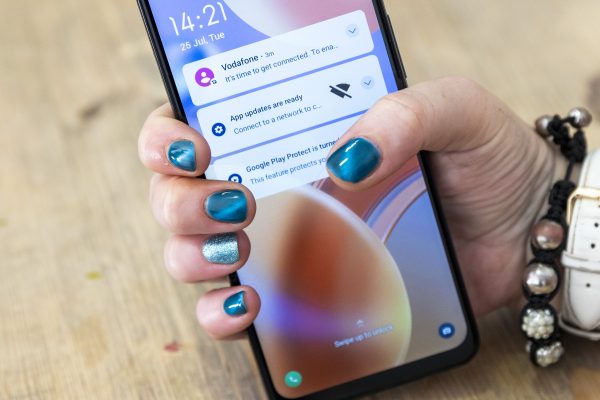Bridging the Digital Divide: How Refurbished Tech and Free Connectivity Are Changing Lives
04 July 2025

At Simon Community Scotland, we’ve been working to bridge the digital divide since 2017. As of summer 2025, we’ve helped nearly 3,000 people experiencing — or at risk of — homelessness get online and stay connected across Scotland.
For the people we support, digital inclusion isn’t a luxury — it’s a lifeline. It means access to healthcare, housing services, job opportunities, community, and connection with loved ones. One person recently told us, “I now feel part of society.” Another said, “It’s opened up my life. I feel I can do anything now.”
But demand for digital support has never been greater. As more and more services go online — often with no alternative way to access them — those without devices, data or digital skills are being left behind. Our own service delivery depends increasingly on people being connected. And right now, a digital revolution is reshaping the way health services are delivered, with the NHS Scotland app set to become a gateway to care. For those who can’t access it, that care may be out of reach.
Despite all this, funding for digital inclusion has fallen sharply. The investment from government and corporate programmes that previously supported our efforts has significantly decreased. Today, we rely on small grants and individual donors to keep people connected.
So we adapted.
We used our experience, learning and connections and found a way to deliver high-quality digital support at a fraction of the previous cost assumptions of over £700 (Connecting Scotland 2020) — to just £100 per person. That includes a device, connectivity, and the support needed to get online and stay online.
We did this by embracing two game-changers.
First, we partnered with Vodafone, whose free SIM programme offers six months of unlimited calls and texts and 40GB of data per month — more than enough for most people. In fact, when we analysed usage from our unlimited data programme, we found that 78% of people used less than 40GB per month. After six months, we support people to transition to affordable, discounted data plans.
Second, we shifted to sourcing high-quality refurbished devices from sustainable tech partners like Reconome and ST4G (Sustainable Tech for Good). These devices are reliable, fully functional, and environmentally friendly — helping us reduce our carbon footprint while still meeting people’s needs.
Crucially, there’s been no drop in quality. People tell us the devices work well, the support is strong, and their connectivity is life-changing. The only difference is that we’ve found a more sustainable way to deliver it.
Digital inclusion shouldn’t cost the earth — It’s not just about the affordability of digital inclusion, it also helps to protect the planet.
That’s why we’re sharing our story. We want other organisations working with digitally excluded people to know that you can offer meaningful digital support on a small budget. Some great partnerships, a few pounds and a bit of effort can truly transform someone’s life.
To find out more about the life changing impact being delivered through digital inclusion at Simon Community, check out our “I Feel Part of Society” Report.
